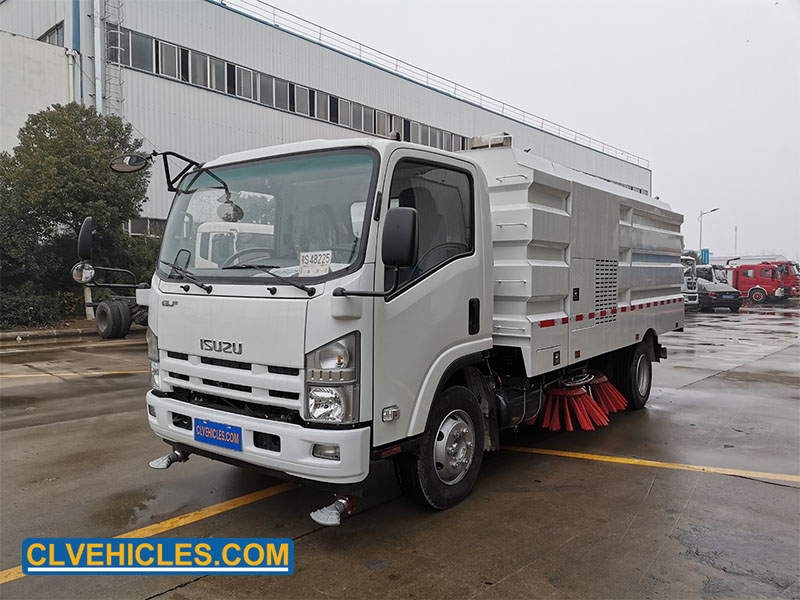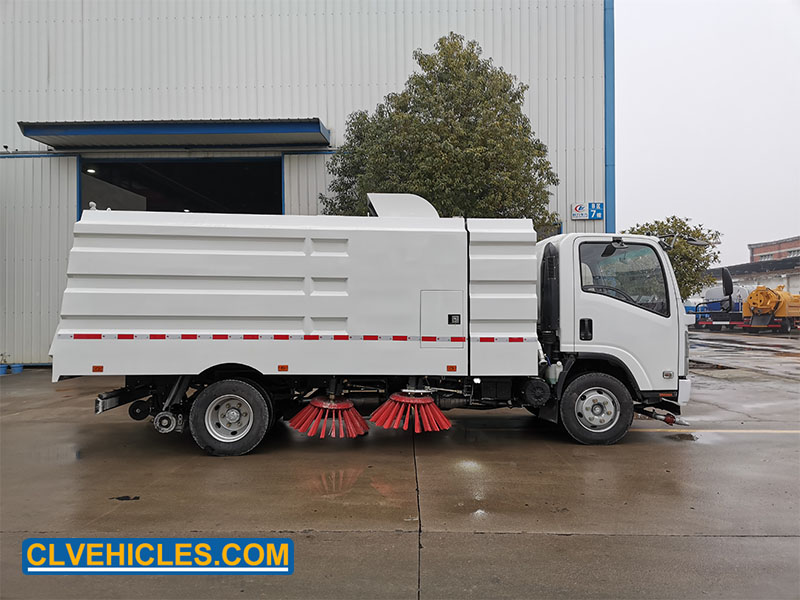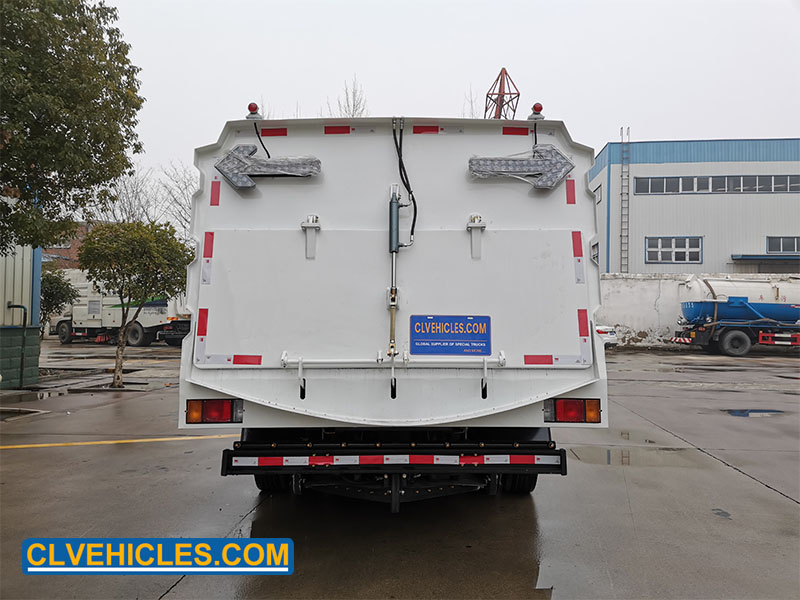Both are sanitation trucks, but the operation process of road sweeper truck is not as simple as sprinklers, sewage suction trucks, and fecal suction trucks. There are many control switches installed on the road sweeper. Without training, you will not know how to use them. Using the road sweeper according to regular procedures can extend its service life and reduce the number of replacement parts.

A. Preparation work before sweeping with road sweeper:
1. Turn on the power supply of the road sweeper distribution box and start the auxiliary machine.
2. Point the left and right sweeping plate control buttons of the road sweeper to the lowered position, then release the control switches and return them to their original positions.
3. Point the control button of the suction cup to the lowered position, and then return it.
4. Turn on the water spray switch of the road sweeper.
5. Increase the speed of the auxiliary engine of the road sweeper to drive the fan to work.
6. Control the speed of the road sweeper according to the road conditions, and do not drive too fast. The ground can be cleaned at a speed of about 10km/h without leaving any residue.

B. Things to note after the cleaning work is completed:
1. Reduce the speed of the road sweeper's auxiliary engine to idle speed.
2. Turn off the water spray control switch.
3. Turn the suction cup control switch to the upward position to stow the suction cup, and then return the control switch to its original position.
4. Turn the sweeping pan control switch to the raised position, raise the sweeping pan, and then return the switch to the upper position.

C. Operation steps for taking out the garbage:
1. After stopping the road sweeper, apply the parking brake.
2. Start the engine of the auxiliary road sweeper to idle.
3. Point the switch of the rear door of the garbage bin to the open position.
4. Point the garbage bin lifting switch to the raised position, raise the garbage bin and unload the garbage.
5. After the garbage is discharged, return the garbage bin to its original position.
6. Turn the switch of the rear door of the garbage bin to the closed position and close the rear door.
7. Stop the auxiliary engine of the road sweeper and clean the parts of the road sweeper.
评论
发表评论